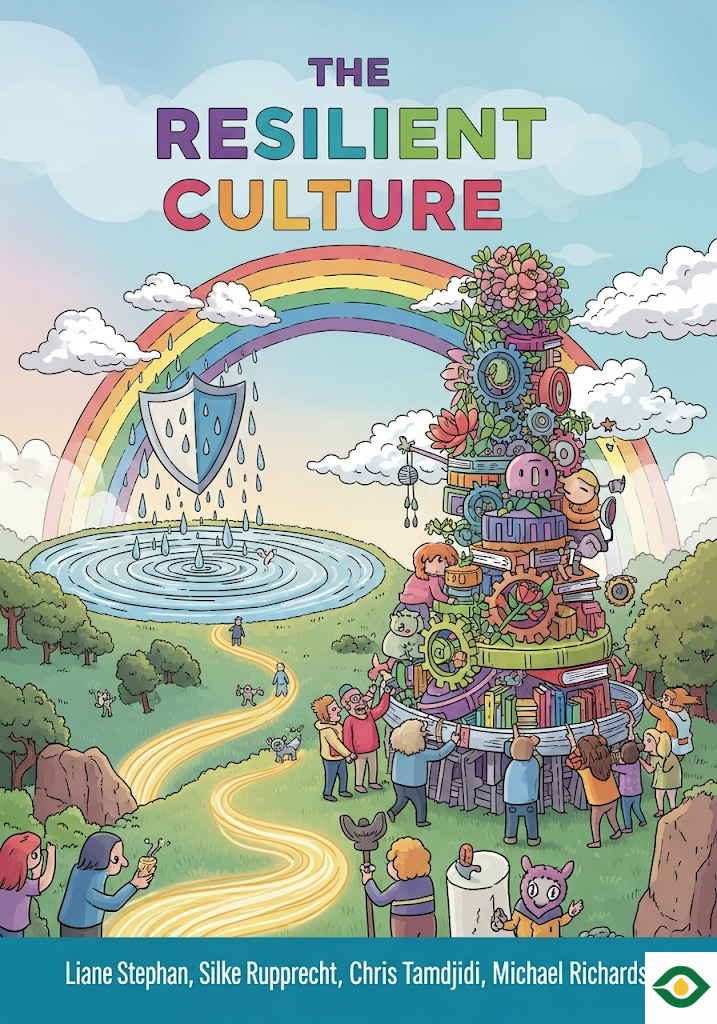Description
Resilience has become one of the most important qualities in today’s unpredictable world. Climate change, global conflicts, and fast-changing technologies all create constant uncertainty. For organizations to survive and grow, they need more than financial strength or strong strategies. They need resilience woven into every part of their culture. This means moving beyond resilience as a personal quality and making it part of the way teams and companies operate every single day.
Many people misunderstand what resilience actually means. Some believe it’s simply the ability to endure hardship or push through stress without breaking. But true resilience is not about never bending—it’s about flexibility, adaptation, and recovery. Just as materials are considered resilient when they can bend and return to their original form, people and organizations are resilient when they can adjust to challenges, recover, and continue forward.
A common misconception is that resilience is something you are born with. In reality, resilience is not a fixed trait. It is a collection of behaviors and skills that can be learned, practiced, and strengthened over time. Things like setting boundaries, practicing mindfulness, or regulating emotions are all tools that can help anyone become more resilient. This is good news, because it means resilience is within reach for every person and every company.
Another misunderstanding is that resilience is someone else’s responsibility. In workplaces, managers sometimes believe staff just need to toughen up, while staff might blame leadership for creating stressful environments. The truth is that resilience is a shared responsibility. Leaders must create supportive conditions, while individuals must take ownership of their own well-being and develop skills to handle challenges effectively.
To better understand resilience, we need to look at how human stress responses are hardwired. Our nervous systems have evolved to react to stress through the “fight or flight” response, which prepares us to face danger or escape it. Afterward, the “rest and digest” system helps restore calm and balance. These automatic systems are part of how we maintain homeostasis, or balance, in our bodies and minds.
Stress is not always harmful. Some stress, known as “eustress,” can motivate and energize us. However, long-term stress, or distress, can cause burnout, anxiety, and even physical illness. Recognizing this balance is key to building resilience.
Our emotions are signals that show how far we are from balance. Even uncomfortable emotions like anger or sadness serve a purpose—they alert us to problems that need to be addressed. Instead of ignoring these signals, resilient people and organizations use them as guides for change and adjustment.
We can think of human states as four categories:
Stressed – high energy but negative emotions. Too much time here leads to burnout.
Growing – high energy and positive emotions. This fuels learning and performance, though it cannot be sustained forever.
Regenerating – low energy with positive emotions. A state of calm, rest, and recovery.
Letting go – low energy with negative emotions. A period of acceptance and regrouping after loss or challenge.
Resilience means moving through these states fluidly, rather than getting stuck. Just like individuals, companies need to allow time for growth, recovery, and renewal.
Resilience is not just a concept—it’s a skill. Skills can be defined, taught, and practiced. People and organizations can actively train themselves to build resilience. These skills can be grouped into three categories:
Behavioral skills – practical actions like taking breaks or removing yourself from a stressful situation.
Psychological skills – mental tools like empathy or reframing challenges in a more positive light.
Physiological skills – mind-body techniques like breathwork and mindfulness that calm the nervous system.
Developing these skills creates the ability to move smoothly between different emotional states. Regular exercise, mindfulness practices, and breathwork are especially powerful. Paying attention to internal signals—like recognizing fatigue before it leads to exhaustion—helps people manage stress before it becomes overwhelming. Finding personal purpose also provides direction, making it easier to persevere through difficulties.
But resilience is not only about individuals—it is also about teams. Humans are deeply social creatures, and our nervous systems are influenced by the people around us. We unconsciously pick up signals of safety or threat from others. A supportive, respectful workplace increases resilience, while a stressful, toxic environment drains it.
For this reason, emotional intelligence and psychological safety are essential for team resilience. Leaders and team members alike must learn to listen, empathize, and create trust. Teams thrive when habits of effectiveness (getting the work done) are matched with habits of interaction (treating each other with respect).
Simple actions can make a big difference. Encouraging casual social connections, setting clear deadlines, rotating responsibilities, and reflecting on team performance all strengthen resilience. Creating opportunities for rest, recognition, and shared learning helps teams adapt and grow stronger together.
Workplace culture is the foundation of resilience. A culture that values psychological safety and emotional well-being supports both individuals and teams. In such cultures, people feel comfortable taking risks, sharing ideas, and learning from mistakes. Leaders play an important role in setting the emotional tone. When leaders demonstrate calm, positivity, and empathy, these emotions spread through the team. On the other hand, leaders who operate in constant stress and pressure often spread negativity, weakening resilience across the organization.
Organizations can foster resilience by training leaders in emotional intelligence and stress management. They can also create policies that protect focus and balance. For example, scheduling meeting-free days, setting limits on after-hours emails, or celebrating team achievements all help maintain a healthy work environment. Mistakes should be treated as opportunities for learning, not as reasons for blame.
Ultimately, resilience is not about avoiding difficulties—it’s about facing them with adaptability and strength. It requires both individual effort and organizational support. By practicing resilience skills, supporting one another as teams, and building positive workplace cultures, businesses can thrive even in uncertain times.
Resilience is not just about survival; it is about growth, renewal, and transformation. Companies that embed resilience into their culture are not only better prepared for disruptions but also more innovative, engaged, and successful in the long run.





